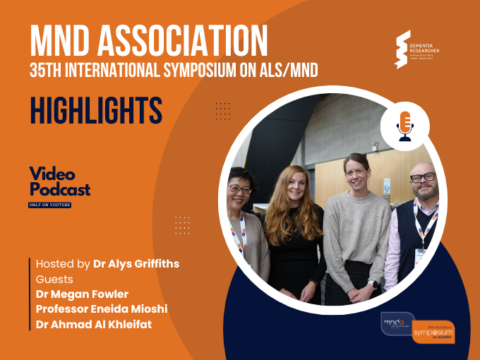Doddie Weir, a towering figure both on and off the rugby field, was diagnosed with motor neuron disease (MND) in 2017. Known for his exceptional skills as a lock and his charismatic personality, Weir’s diagnosis sent shockwaves through the rugby community. He was only 46 at the time of diagnosis and Doddie is just one of several cases that have led some people to wonder if certain sports increase your risk of developing MND.
Motor Neurone Disease, also known as Amyotrophic Lateral Sclerosis (ALS), is a progressive and debilitating neurodegenerative disorder. MND affects the nerve cells, known as motor neurons, that control voluntary muscle movements, such as walking, speaking, swallowing, and breathing. As the disease progresses, these motor neurons gradually degenerate and die, leading to a progressive loss of muscle function and weakness. This can result in difficulties with mobility, coordination, speech, and eventually, death. The exact cause of MND is not yet fully understood, and it can occur sporadically (without a known cause) or, in some cases, be inherited due to specific gene mutations. MND is a relentlessly progressive disease with no known cure, although various treatments and therapies can help manage symptoms and improve quality of life for individuals living with the condition.
Understanding the potential link between sports participation and the development of Motor Neurone Disease (MND) is a subject of ongoing scientific inquiry and public concern. Many individuals wonder whether engaging in sports, particularly those involving contact or repetitive head trauma, increases the risk of developing MND. While various studies have explored this topic, the evidence remains inconclusive, and the complex nature of MND necessitates a nuanced examination of the potential relationship between sports and this debilitating neurodegenerative disorder. There is, however, a potential biological mechanism whereby repeated head trauma can lead to an increased risk of developing MND via another form of neurodegeneration called Chronic Traumatic Encephalopathy (CTE).
Chronic Traumatic Encephalopathy (CTE) is a degenerative brain condition associated with repeated head injuries and concussions. It is commonly found in individuals who have participated in contact sports such as American football, boxing, ice hockey, and soccer, as well as military veterans exposed to blast injuries. CTE is characterised by the accumulation of tau in the brain. Over time, this protein build-up can lead to progressive damage to brain cells, resulting in various symptoms including memory loss, cognitive decline, mood disorders, impulsivity, aggression, and difficulties with motor function. The diagnosis of CTE can only be definitively confirmed through post-mortem examination of the brain tissue. It is important to note that CTE is still being actively studied, and our understanding of its causes, risk factors, and long-term effects is evolving. It has, however, been a disease of great infamy because of the effect it has had on the world of sports. Nowhere is this more evidence than in the case of former World Wrestling superstar Chris Benoit.
The story of Chris Benoit’s CTE is a tragic and controversial one. In June 2007, a shocking incident occurred when Chris Benoit, his wife Nancy, and their young son Daniel were found dead in their home in Fayetteville, Georgia. All died at the hands of Chris. Following the incident, investigations were conducted, including an examination of Chris Benoit’s brain. The examination revealed that he had an advanced stage of CTE. The extensive damage observed in his brain was believed to be a result of the repeated head traumas he had suffered throughout his wrestling career.
CTE is thought to be associated with repeated concussions and subconcussive hits to the head. It can lead to cognitive impairment, behavioral changes, and mental health issues. In the case of Chris Benoit, the presence of CTE raised questions about whether the condition played a role in his tragic actions. This incident sparked significant public debate and brought attention to the long-term effects of head trauma in sports, particularly in contact sports like professional wrestling and football. It prompted discussions about the importance of concussion protocols, athlete safety, and the potential consequences of repeated head injuries. While Chris Benoit’s case highlighted the devastating impact of CTE, it is essential to recognise that his actions cannot be justified or condoned. It serves as a reminder of the need to prioritise athlete safety and take measures to prevent, detect, and manage head injuries in sports. So how does this relate to MND? Let’s go back to a sport like rugby for a moment.
Concussions are a common occurrence in rugby, given its physical nature and high-impact collisions. Rugby involves intense physical contact; tackling, and scrums, which can result in head injuries and concussions. Due to the fast-paced and physical nature of the game, players are at risk of experiencing direct blows to the head from collisions with opponents or contact with the ground. The nature of the sport also involves players frequently jostling for possession, leading to accidental clashes and collisions that can result in head trauma. As a result, the prevalence of concussions in rugby is a concern, and efforts are continually being made to enhance player safety, raise awareness about concussion management, and implement protocols to identify and manage head injuries effectively.
According to a recent study, former rugby players face a significantly higher risk of developing Motor Neurone Disease (MND). The study found that retired professional rugby players have a 15 times higher risk of MND compared to the general population. The research involved analysing health records of over 8,000 former professional rugby players in England, Scotland, and Wales. However, it is important to note that the study did not establish a direct causal relationship between rugby and MND, and further research is needed to understand the underlying factors contributing to this increased risk. But still, it begs the question – what could be causing this trend?
And that takes us back to CTE. High impact sports with high rates of concussion lead to greater risk of developing CTE. New research has prompted discussions regarding the potential link between CTE and the development of MND. We have yet to determine a biological link but there seems to be epidemiological evidence to suggest there is increased risk in certain sports. NFL players are seen to be 4 times more likely to develop MND in their lifetime. That figure could be as much as 15 times higher for rugby players.
This has led to governing bodies taking action in response to the concerns surrounding the potential long-term health risks associated with contact sports like rugby, football, and boxing. Recognising the need to prioritise athlete safety, efforts are being made to implement stricter safety protocols, enhance concussion management procedures, and improve equipment design. Governing bodies are collaborating with researchers and medical experts to gain a better understanding of the potential links between these sports and neurodegenerative diseases like CTE and MND. Additionally, there is a growing emphasis on educating athletes, coaches, and parents about the risks involved and promoting injury prevention strategies. By taking these proactive measures, governing bodies aim to mitigate the potential health risks and ensure that the future of these sports prioritises the well-being of participants.

Dr Sam Moxon
Author
Dr Sam Moxon is a Research Fellow at the University of Birmingham. His expertise falls on the interface between biology and engineering. His PhD focussed on regenerative medicine and he now works on trying to develop 3D bioprinting techniques with human stem cells, so that we better understand and treat degenerative diseases. Outside of the lab he hikes through the Lake District and is an expert on all things Disney.

 Print This Post
Print This Post





